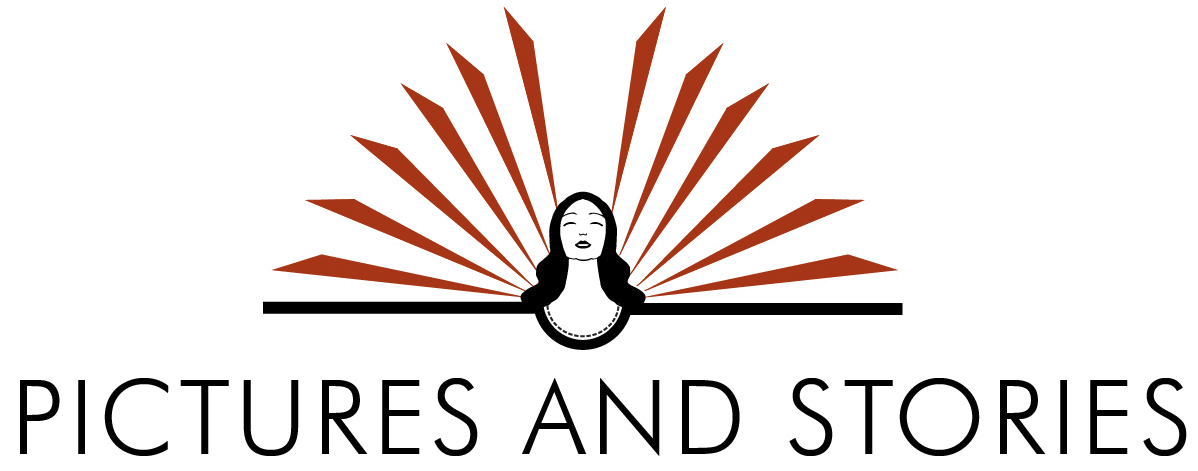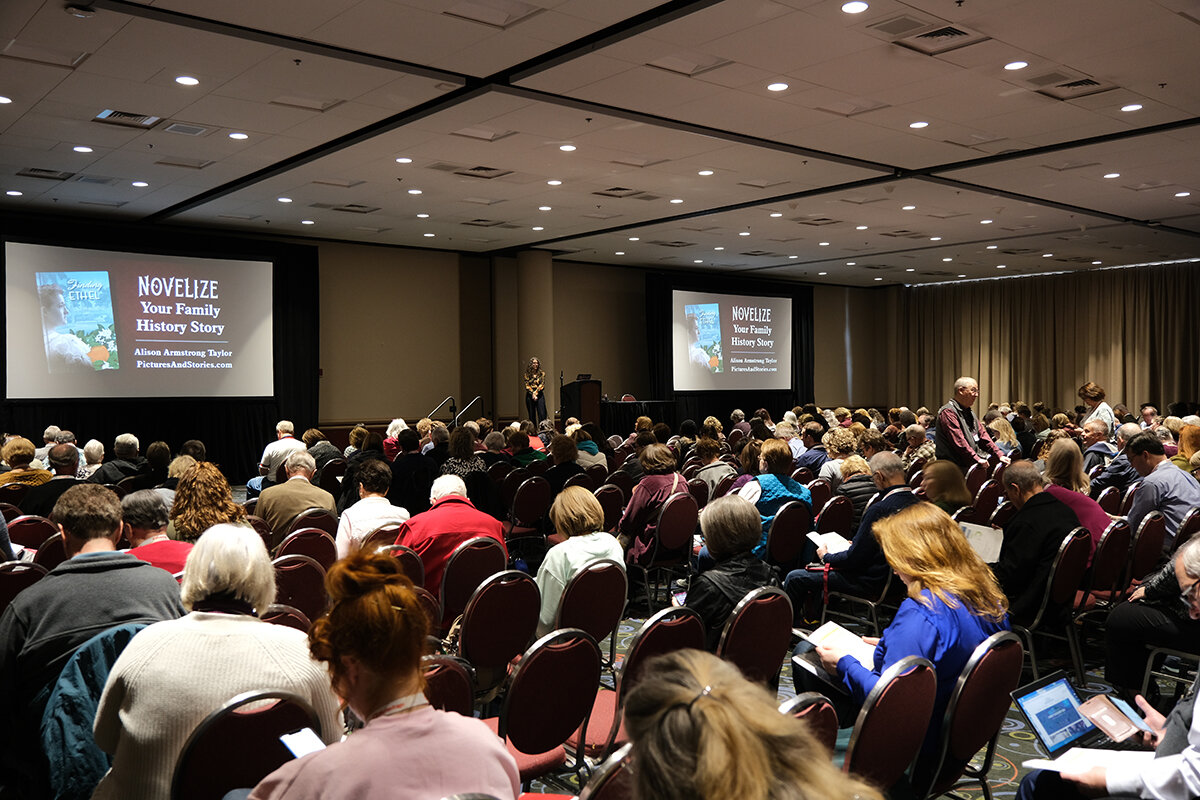I'd love to be able to draw well. (Alas, not one of my natural talents, although if I took the time I'm sure I could improve.) Because if I could, I would make a graphic novel about some of the stranger episodes of my life.
Read more25 Thought-Provoking Interview Questions
You've finally managed to corner Grandma with tape recorder in hand. She's told you about where she's lived, what her childhood was like, and how she met Grandpa. You have a lot of the basics--but now you want to dig a little deeper. How do you get her to open up?
Not to worry. Here are a few questions that go beyond the run-of-the-mill "what is your name and where were you born" variety. While you're at it, interview yourself! Jot down some thoughts about your answers to these questions in your journal or on a timeline to flesh out your own life stories.
Read moreHow do you write a story that’s not yours? Telling the stories of your ancestors
Telling the stories of your ancestors
As personal historians, Tom and I mostly focus on helping people tell the stories of their own lives. But what if your chosen project is to tell not your own story, but that of an ancestor? Ancestral stories present a different kind of challenge than writing our personal stories—in personal histories, we often have too much information and the challenge becomes knowing what to leave out. In an ancestral history we usually don’t have enough information. Our challenge then becomes to construct an interesting narrative around dubious, sketchy, or even non-existent life details.
Read moreThe Worst Advice We've Ever Heard About Writing a Memoir
We don’t know who first said it, but somebody must have, because most every person we meet who is writing about their life tries to do it this way:
"Start at the beginning, and write in chronological order."
That’s why we have so many of our clients come to us for help after they’ve finished one-and-a-half chapters and quit in frustration. Why is this a bad way to write your own life stories?
You guessed it—because you don’t actually remember the beginning of your life. It requires research. Even if you’re just calling your Aunt Milly to see who else came to the hospital, it’s still research, and gives you one more thing to procrastinate.
Also, your birth is not usually the most interesting event in your life either, unless you were born in hurricane or a taxi or Paris.
That’s not to say that a memoir shouldn’t be a chronological narrative—you just shouldn’t write it in that way.
So if you’re working on a memoir with or without professional help, we’ll give you a little FREE instruction:
Start with the low-hanging fruit. Er, stories.
First, jot down as many memories (in short phrases that will recall the incident to your mind) as you can on a chronological timeline (we will talk more about this in future posts.) Circle a few that are the most important for you to tell.
Then pick the easiest one to tell and write it down. (Put it aside, you’ll edit it later.)
Then pick the next easiest one and write it down.
Keep going, from easiest to hardest. You will gain confidence as you go along, rather than getting bogged down from the very beginning.
Pretty soon, you’ll have a little collection of stories, which you can then put in whatever order you choose (chronological, thematic, flashbacks) and do some editing.
Taa daaaa! Before you know it you will have magically created a rough first draft of your entire narrative, which will make you feel a lot cooler than having one and a half unfinished chapters in a drawer somewhere.
A Read Down Memory Lane: Lessons from Your Former Self
A story I wrote in elementary school.
Have you ever stumbled across an old story you wrote in the first grade? Listen to this great piece on NPR's "Talk of the Nation" today. Guest Jim Sollisch talked about how finding old thank-you notes from his childhood foreshadowed his adult life as a writer. Even more fascinating were the call-ins to the show, people who had stumbled across things they had written in their younger years and what it taught them about themselves.
What do your childhood scribblings reveal to your adult self?
Connections - A Childhood Home
The Harvey family in 1942. The Harveys lived in "our" home 70 years ago; they are seated in the living room. Julie Harvey Tuckfield is the blonde on the left. Bud, the tall youth in the center, built the fence that still surrounds our patio.
One fine day in the summer of 2011, Tom was working in the yard when a car stopped in front of our house. A couple emerged and the woman gestured toward the house as they stood on the sidewalk, tracing the outline of the home with her hands as she spoke. As Tom went to greet them, they introduced themselves as the Tuckfields from California. Julie Tuckfield explained that she had lived in the house as a child in the 1940s.
Our home's original owner stands in front of the home under construction.
We invited them in to take a "tour" and were treated to a flood of room-by-room reminiscences. Julie recalled sitting at the dining room table, gazing out the same large mullioned window for what seemed like hours until she finished a detested vegetable. "This was my room," she said of what is now our guest room, where she was bedridden for a while with an illness. She asked if she could bring her older brother, Bud, back the next day to see the home. We assented and eagerly awaited their return.
Bud Harvey, a tall white-haired gentleman, explained that he had erected the white picket fence that surrounds our patio in 1946, still standing strong nearly 70 years later. His room was in the basement (which was fully finished, unusual for a home built in the 1920s, and is now our working studio) and we wondered how he could have jumped out of bed without hitting his head on the low ceiling. He spoke of building a model airplane in the washroom (still a washroom) that was so large he had to detach the wings in order to get it out.
In our line of work, we see so many connections between seemingly unrelated events in the lives of our clients that we are no longer surprised by them (although it is always a pleasure to discover such connections.) So we were delighted to find out that Bud Harvey had been a high school buddy of Tom's uncle, Marvin Johnson (whose history book we are currently working on).
Marvin later told us of a prank he and Bud once pulled: they removed a mascot statue from the rival West High School lobby, making a getaway on Bud's motorcycle with the panther perched between the handlebars. They couldn't figure out a way to return it without getting caught, so they crated the statue and left it on the steps of the Salt Lake City Public Library with a 3-cent stamp, addressed to West High School!
Talking with Julie and Bud vividly reminded us that seeing the places of one's childhood, even in an altered state, is a powerful memory trigger. Describing the sights, sounds, and even smells of the places important to us can add authenticity and a richness of detail to our life stories and are well worth including in a personal history.







We are so excited to be back at RootsTech live this year! Come by and see the Pictures and Stories booth (#1609) and see some of the many new books we’ve helped our clients create. Alison is giving two in-person classes: The Seven Deadly Sins of Building a Digital Archive, and Making a Genealogy Story Book. Hope to see you there!